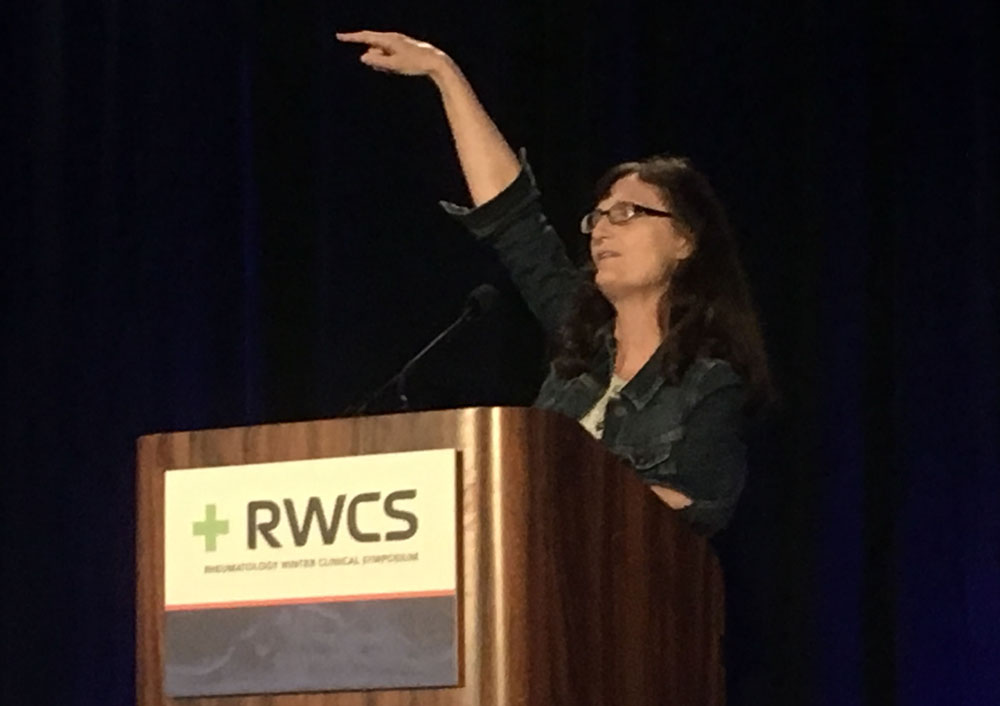Tracking the evolution of systemic lupus erythematosus guidelines

MAUI, Hawaii — Evolution of the understanding of systemic lupus erythematosus has shaped guidelines for the disease through the decades, according to a presentation at the 2020 Rheumatology Winter Clinical Symposium.
“First of all, we often use criteria in our mind to make a diagnosis,” Janet Pope, MD, professor of medicine at the University of Toronto, told attendees. “But the [American College of Rheumatology] and now EULAR/ACR have developed criteria for classification for studies.”
Pope suggested that although there can be divergence between diagnostic criteria and clinical trial classification criteria, most of the time the two should be similar in any given patient.
The talk traced the journey from the first guidelines in 1982 to the 2019 iteration of the EULAR/ACR document.

The 1982 document was largely for classifying patients, and was marked by malar or discoid rash, photosensitivity, oral or nasal ulcers, inflammatory arthritis, pleurisy, pericarditis, serositis, renal complications like glomerular nephritis or nephrotic syndrome, neurologic disorders, complete blood counts and positive ANA. “Our old criteria were of a duration of 6 weeks or more,” Pope said. “A lot of rash stuff comes into this.”
Zeroing in closer on the rash as it pertains to patients today, Pope drew a distinction between dermatomyositis and SLE. “The kind of rash will make a difference to the kind of lupus you are trying to diagnose,” she said.
Moving to the 2012 Systemic Lupus Collaborating Clinics (SLICC) Criteria, Pope highlighted that the algorithm for diagnosis — which includes 11 clinical criteria and six immunologic criteria — calls for at least one clinical criteria and at least one immunologic criteria for a total of four criteria; or lupus nephritis by biopsy with ANA or anti-double-stranded-DNA antibodies.
“Why did they do it this way?” Pope said. “Well, because it would be weird to have lupus nephritis by biopsy with ANA or anti-double-stranded-DNA and not have SLE. That was a deficiency in the old criteria, and they made up for it here.”
The 2019 EULAR/ACR criteria start with a positive ANA of at least 1/80, according to Pope. “If you have a negative ANA, forget it, you are out,” she said.
The updated document includes seven clinical domains and three immunological domains weighted from two to 10 points. Patients accumulating 10 or more points are classified as having SLE. “These criteria allow for more inclusivity,” Pope said.
However, Pope did offer some criticism of the EULAR/ACR document. “We need more data on treat-to-target, though it makes a lot of sense,” she said. “The target is not agreed upon.”
Pope added that the EULAR/ACR guidelines may already be outdated soon based on novel data that are emerging, which she said was “good news.” – by Rob Volansky
Reference:
Pope J. Special Seminar: SLE: criteria, guidelines, and the approach to refractory patients. Presented at RWCS Annual Meeting; Feb. 12-15, 2020; Maui, Hawaii.
Disclosure: Pope reports speaker/advisory relationships with AbbVie, Amgen, AstraZeneca, Bristol-Myers Squibb, Eli Lilly, Gilead, GlaxoSmithKline, Merck, Novartis, Pfizer, Roche, Sandoz, Sanofi and UCB.

